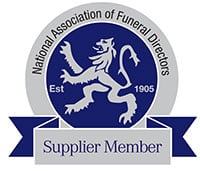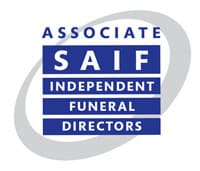The world of death management and funerals is a bit like a jigsaw puzzle. If there’s one thing that the pandemic taught us, it’s that the picture for bereaved families is better when all the pieces come together, ensuring consistency in the way a deceased person and their family are cared for.
Celebrants have a vital role to play in the completion of the death journey, getting families to where they need to be in the grieving process. The funeral service is one of the most important steps in that process as affirmation that a loved one has died. To do that, celebrants need quickly to build close, trusting, supportive relationships with a family. They bring personal, communication and creative skills to help them design a service that is meaningful, sometimes celebratory yet always dignified and respectful. The ceremony is a very public and ritualised declaration of the love and grief of those left behind and it is telling that early lockdown suggestions that we should stop or delay funerals largely fell on deaf ears – people instinctively recognised that it is just too important to the mental health of the bereaved.
Most importantly, a funeral ceremony should be comforting and, yes, even enjoyable. Many people have come out of a service and said, ‘I really enjoyed that’ and then caught themselves as they realise what they have said and where they are!
Members of the Institute of Civil Funerals (IoCF) reported that ceremonies continued through the pandemic most effectively when crematoria and bereavement services recognised that celebrants work with, not for, a funeral director. Where that recognition happened, celebrants were contacted directly about local restrictions; changes, for example, to service times, numbers allowed to attend, webcast provision and which rituals and symbolic actions were allowed or prohibited. It meant celebrants could ensure a consistent and timely message, helping to manage family expectations and so minimising the possibility of conflict for crematorium and cemetery staff on the day.
Some crematoria were also exceptionally pro-active in making funerals safer for bereaved families and celebrants and their own staff. They installed screens around the lectern, for example and brought in additional microphones so that speakers did not have to share.
Celebrants are a relatively new piece of the jigsaw. Many of us are still called ‘vicar’ by people who don’t yet understand our specific role – to create a ceremony exactly as the bereaved family wants it to be, not according to our own wishes and beliefs.
Others haven’t yet heard about celebrants and the work we do. Still fewer understand that most celebrants are self-employed and can be booked independently, rather than through a funeral director. Many families are not aware of the number of options available to them if they book a celebrant themselves.
Throughout the pandemic, celebrants continued to work alongside funeral directors, crematoria and cemeteries to allow funerals to go ahead pretty much as normal. We worked hard, and often creatively, to ensure that the content, meaning and dignity of services have been maintained while still recognising the necessity of reduced service times, social distancing and restrictions on rituals and actions. We have supported families and others in the funeral sector to ensure that the final rite of passage is completed.
My wish, with the lifting of restrictions, is that, within the funeral sector we talk together more, listening to each other and finding solutions to ensure we give every bereaved family the best possible funeral.
The IoCF is keen to start the dialogue. Only then can we complete the fine jigsaw picture that is the funeral sector.
Jointly authored by Sue Holden, Chair of IoCF and Susan Flipping, Council member





